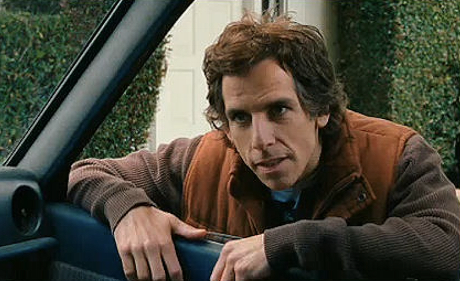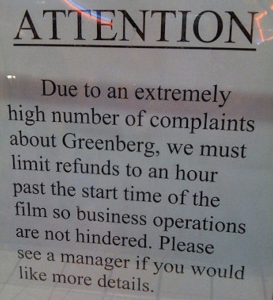Remember mumblecore? I’m kidding — of course we remember. But there’s an entire generation out there (Zoomers) that has never heard of it and certainly isn’t interested in knowing or asking questions or anything, and are content to just sit on their couches and inhale streaming content. I can’t believe the world has turned out as it has.
Does anyone remember Noah Baumbach‘s Greenberg, which is now 13 and 1/3 years old? Six years ago in Cannes I asked Baumbach about Greenberg and even he barely remembered it. Well, he remembered it but he didn’t really want to talk much about it because it was a huge bomb and because it pissed some people off.
I watched it again, and it’s still one of most daring, balls-to-the-wall, character-driven films I’ve ever seen or laughed with.
On 4.3.10 I posted a piece called “Big Greenberg Divide.” Key passage: “Greenberg is about what a lot of 30ish and 40ish X-factor people who wanted to achieve fame and fortune but didn’t quite make it or dropped the ball after a short burst…it’s about what these people are going through, or will go through. It’s dryly amusing at times, but it’s not kidding around.”


The second half of the article was a Greenberg defense written by HE correspondent “Famous Mortimer”:
“I think it is provoking such strong levels of resentment from viewers because it is a movie very much of these times but not made in the style of these times. It exposes the toxic levels of conceitedness and alienation today with the sincerity and empathy of ’70’s films by Ashby, Altman and Allen.
“First off, it’s a story about people. There is no high concept or shoehorned stake-raising set piece. Viewers either have the patience to connect with the human pain on display or they are lost. Unlike Sideways, there is no charming countryside setting or buddy comedy hijinks to punch up the mood.
“Second, the dialogue is the action. Only when the viewer is willing to think over the dialogue will characters’ seemingly ambiguous motivations and back-stories become clear. There’s no juicy monologue or nauseating flashback to convey these points. Instead, the viewer comes upon them over the course of the film in the form of passing references made by various characters. It is up to us to take these bits and pieces together and unlock the character revelations for ourselves. No more spoon-feeding cinema.
“Third, this film is a labor of love. That means idiosyncratic details are to be found at every level of its making. Only by thinking these details over and feeling the connections between them do we appreciate what the movie is trying to do. It’s a really thoughtful and heartfelt experience.”












